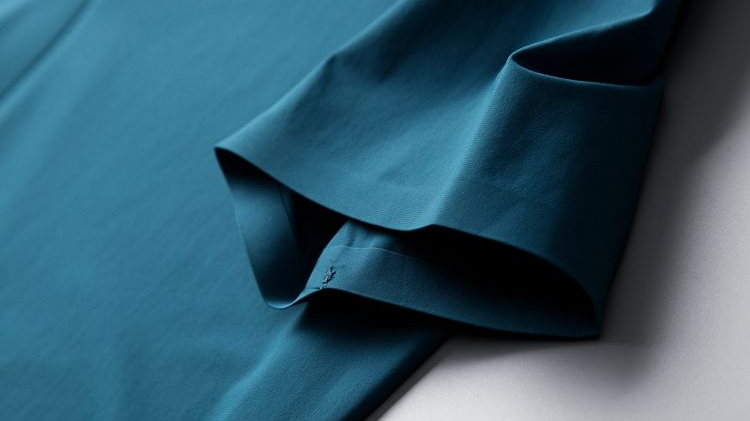
01Anti-wrinkle finishing
Anti-wrinkle finishing is sometimes also called anti-wrinkle finishing, because most of it uses high-quality Molecular materials, especially synthetic resins, are used as anti-wrinkle finishing agents, so they are also called resin finishing.
Resin finishing is done with polymer materials. By adding other components, its purpose and function is not only anti-wrinkle, but also anti-shrinking and waterproof. , water repellent, water absorbent, soft, antibacterial, antistatic, flame retardant, warm, reinforced, easy to wash and change the feel.
Strictly speaking, the purpose and function of anti-wrinkle finishing is to make textiles less prone to wrinkles or easy to return to their original shape, and to maintain their original shape during use. Flat appearance. In addition to resin finishing, other chemicals can also be used for cross-linking.
It is not difficult to understand that the essence of anti-wrinkle finishing is to improve the stability of the textile form. Therefore, while improving the wrinkle resistance, it often also produces anti-shrinkage and anti-wrinkle effects. Hot effect.
In some materials, anti-shrinkage and anti-wrinkle (sex), durable press (sex) or non-iron (sex) finishes are often used together. In fact, anti-wrinkle finishing is different from shrink-proof, no-iron and durable press finishing in terms of purpose, method and measurement index.
02 Non-iron textiles
No ironing Textiles refer to textiles that must meet four requirements: dimensional stability, appearance smoothness, pleat retention and seam appearance after washing and drying.
In order to unify the meaning of terms, my country’s textile standards stipulate that no-iron textiles (No Iron textiles) include shrink-resistant and wrinkle-free (shrinkresistant and wrinkle free) and durable Durable Press textiles are two types of products.
Since people’s requirements for the morphological stability of textiles generally include anti-shrinkage and anti-wrinkle properties, anti-shrinkage and anti-wrinkle properties are used as a term in my country’s textile standards .
For products that are required to maintain pleats after washing and drying (such as skirts, trousers, etc.), non-iron means durable pressing;
For products that do not have pleats or creases or do not require pleats to be maintained after washing and drying, such as shirts and casual wear, the meaning of no-iron is only to prevent shrinkage and wrinkles. It only includes three requirements: dimensional stability after washing and drying, appearance smoothness and seam appearance.
Therefore, fabrics only have anti-shrink and anti-wrinkle products, but no durable press products; styles and products have both anti-shrink and anti-wrinkle products and durable press products. .
Anti-shrinkage and anti-wrinkle properties refer to the ability of textiles to maintain satisfactory dimensional stability, flatness and seam appearance after repeated washing during the wearing process. Anti-shrink and anti-wrinkle textiles refer to textiles that still have anti-shrink and anti-wrinkle properties after five cycles of washing and drying.
03 Durable press properties
Durable Pressability means takingDuring the use of clothing and textile products, they do not need to be ironed or only need to be slightly ironed after being washed many times to restore their performance to a state suitable for wearing or use. In addition to the requirements for dimensional stability, flatness and seam appearance, durable press properties also require the retention of pleat appearance.
Durable press textiles refer to textiles that still have anti-shrinkage and anti-wrinkle properties and maintain a pleated appearance after 5 cycles of washing and drying.
The wrinkle resistance of the fabric can be characterized by the wrinkle recovery angle (WRA) of the fabric.
The international market for washable and wearable cotton fabrics generally requires a wrinkle recovery angle (WRA) ≥ 250°, DP grade 3 to 4, and tensile strength loss ≤ 40 %. The wrinkle recovery angle (WRA) of durable pressed textiles is generally 250°~300°, the DP grade is ≥3.5, and the tensile strength loss is ≤40%.
In 2002, my country formulated my country’s national standard for non-iron textiles GB/T 18863-2002 with reference to international standards. In addition to the requirements for physical properties, color difference, yellowing and hygienic performance, this standard also requires anti-shrinkage and anti-wrinkle properties:
After 5 cycles After washing and drying, the appearance smoothness is ≥3.5 (GB/T 13769292, equivalent to ISO 7768-1985);
Seam appearance ≥ level 3 ( GB/T 13771);
Dimensional change rate -3% ~ 3% (GB/T 8628, GB/T 8629, GB/T 8630, If there are other standards for clothing, the clothing standards will apply). However, mulberry silk and its blended interwoven anti-shrinkage, anti-wrinkle and easy-iron textiles have no requirements on the appearance of seams (see GB/T 15551).
For durable pressed textiles, it is also required that after 5 cycles of washing and drying, the pleat appearance standard is >3.
It should be noted that after 5 cycles of washing and drying, the method for measuring anti-shrinkage and anti-wrinkle properties and durable press properties is consistent with international requirements.







